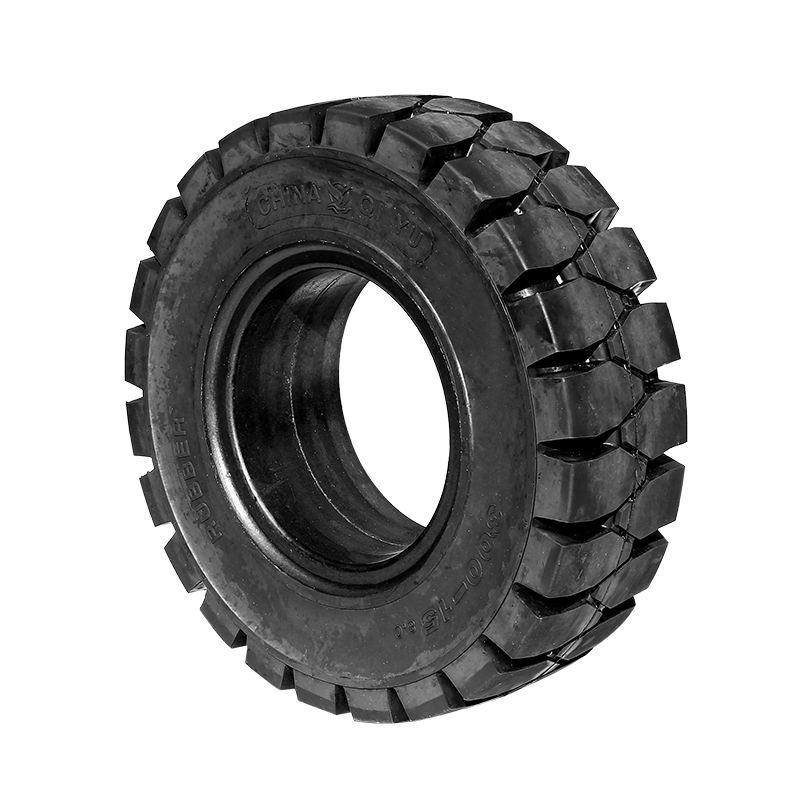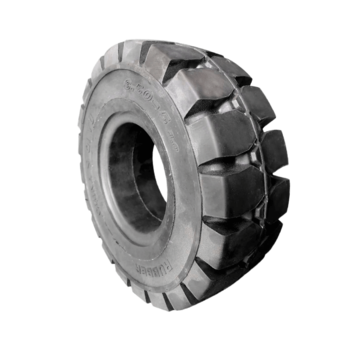. Load Capacity and Weight Distribution
One of the critical design elements of a Press-on Solid Tire for Electric Forklift Truck is its load-bearing capacity. Forklifts vary widely in size and the weight of loads they carry. The tire must be engineered to support both the weight of the truck and its rated load. This requirement directly impacts the choice of rubber compound, the internal structure of the tire, and its overall dimensions.

A tire that is not designed to support the appropriate weight can bring about premature wear, reduced traction, and potential safety hazards. Designers must therefore calculate the dynamic load per tire and select materials and profiles that offer adequate strength without sacrificing comfort or maneuverability.
. Operating Surface Conditions
The type of surface on which the forklift operates plays a central role in the design of the Press-on Solid Tire for Electric Forklift Truck. Indoor warehouses with smooth concrete floors, for example, require different tread designs and rubber formulations compared to semi-rough surfaces like asphalt or packed gravel.
For smooth, clean floors, the tire may have a smooth tread pattern or even a slick surface to maximize surface contact and reduce rolling resistance. Conversely, for less polished surfaces, a lightly grooved or ribbed tread may be included in the design to enhance traction without overly compromising wear resistance. The design of the Press-on Solid Tire for Electric Forklift Truck must therefore align with its expected surface conditions.
. Usage Frequency and Work Cycles
Another significant factor affecting design is the intensity and frequency of forklift usage. Forklifts operating continuously in multi-shift environments place a much greater strain on tires compared to those used sporadically. The Press-on Solid Tire for Electric Forklift Truck must therefore be designed with consideration for heat build-up, wear resistance, and long-term structural integrity.
High-duty cycle applications typically require tires made from rubber compounds that offer resistance to compression set and deformation under prolonged use. Heat dissipation features—such as specialized grooves or embedded heat-reducing materials—may be included in such cases to prevent tire degradation.
. Traction and Stability Requirements
Safety and maneuverability are closely related to traction. In the design of a Press-on Solid Tire for Electric Forklift Truck, engineers must evaluate the level of grip required for various tasks, especially when forklifts make tight turns, operate near loading docks, or travel on inclines.
The tread pattern, contact patch size, and rubber hardness all affect traction. In many cases, a balance must be struck between providing adequate grip and reduce rolling resistance. Overly soft tires may improve traction but wear out more quickly, while harder compounds may extend life but reduce maneuverability.
. Environmental Conditions
Temperature, humidity, and exposure to chemicals also affect tire performance and hence must be considered in the design process. A Press-on Solid Tire for Electric Forklift Truck operating in refrigerated warehouses or areas with high moisture levels must be resistant to cold cracking or hydrolysis. Similarly, exposure to oils, solvents, or other industrial chemicals demands rubber compounds that offer chemical resistance.
Tires used in outdoor settings may also require additional UV resistance. Therefore, the operating environment heavily influences the selection of materials and protective features in the tire design.
 View More
View More
 View More
View More
 View More
View More
 View More
View More
 View More
View More
 View More
View More
 View More
View More
 View More
View More
 View More
View More
 View More
View More
 View More
View More
 View More
View More